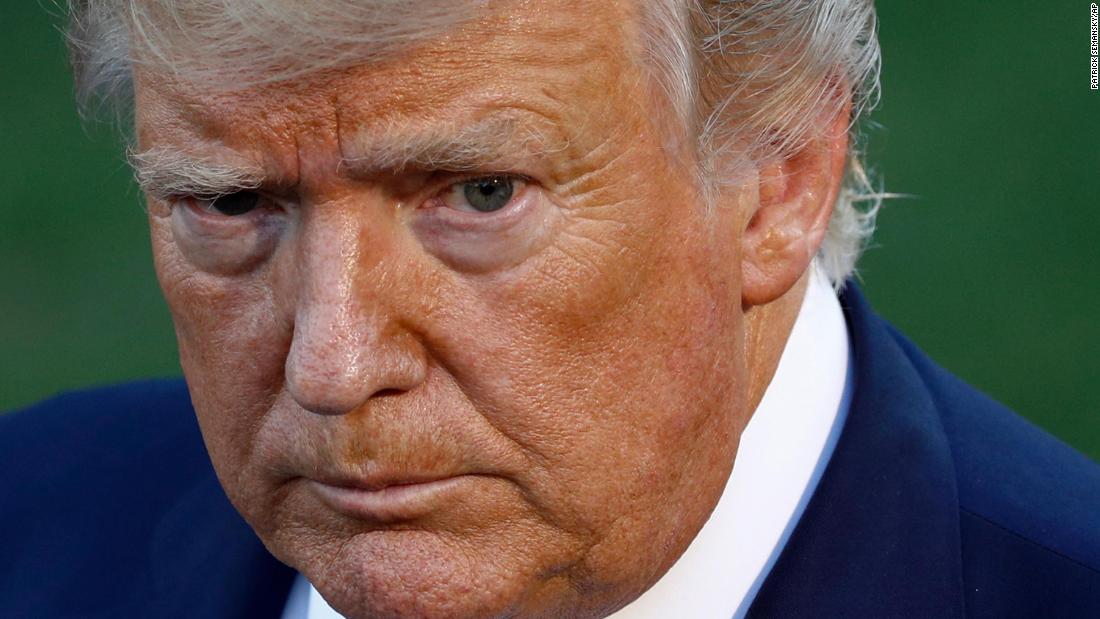Trump’s posturing back and forth between aggression and conciliation might work for a real estate deal in Manhattan, but it’s quite confusing and the stakes are also much higher when you are dealing with the complex calculations of a major regional power such as Iran, which has long regarded the United States as a foe.
But Trump seems to now have amnesia about it,
tweeting Sunday, “The Fake News is saying that I am willing to meet with Iran, ‘No Conditions.’ That is an incorrect statement (as usual!).”
Trump has a history of sending mixed messages regarding his intentions toward Iran. After the Iranians shot down a US drone in June, he
tweeted, “Iran made a very big mistake!” Trump approved retaliatory strikes against Iranian missile batteries and radars and then abruptly called off the operation.
In recent weeks Trump has made conciliatory statements about the Iranians. Earlier this month, Trump
said he could be open to meeting with Rouhani at the UN General Assembly in New York, which begins next week.
Trump’s recently departed national security adviser, John Bolton — long an advocate for regime change in Iran — opposed a suggestion from Trump that he might support lifting some of the sanctions against Iran,
according to The Washington Post. This disagreement was one of the reasons for Bolton’s ouster from the White House last week.
Monday, a spokesman for the Iranian Foreign Ministry said there was
no possibility of a meeting between Rouhani and Trump at the General Assembly.
President’s foreign policy in shambles
Trump’s foreign policy agenda is now largely in shambles. The much-vaunted dealmaker has seen his negotiations with the North Koreans over their nuclear program fizzle and yield scant tangible results. Trump abruptly ended negotiations with the Taliban this month. Trump’s trade negotiations with the Chinese seem to be at an impasse and the possibility of an Israeli-Palestinian peace deal on his watch is close to zero.
Iran is turning up the heat against the Saudis as well as the United States following the re-imposition of US sanctions against the Iranians by the Trump administration last year. The new round of US sanctions has more than halved Iran’s
oil exports, its key revenue source.
The Iranian Islamic Revolutionary Guard Corps and its elite Quds Forces and Iranian proxies around the Middle East are
fighting back to signal their anger with the Trump-imposed sanctions.
The Trump administration has blamed Iran for Saturday’s attack against key Saudi oil facilities that
disrupted around half the country’s oil capacity.
Ramping up the “maximum pressure” campaign on the Iranians has helped lead to Saturday’s serious attack on the Saudis, a close US ally, which has put global oil markets into a tailspin and simultaneously ramped up the possibility of a wider regional war. Art of the Deal, indeed.
The Iranians have
denied responsibility for Saturday’s attack, which is their routine response when they or their proxies carry out attacks in the region.
President Trump
tweeted Sunday that the United States is “locked and loaded depending on verification” of who was behind Saturday’s attack in Saudi Arabia.
The negotiated path
So what will happen between Trump and Iran? Negotiations are vastly preferable to a war. And that seems to be Trump’s natural inclination.
The President sent additional troops to Afghanistan only reluctantly in 2017 and was pursuing a withdrawal agreement with the Taliban until he abruptly canceled the negotiations earlier this month. At the end of 2018, he said he was going to pull all US troops out of Syria, precipitating the resignation of the secretary of defense, Jim Mattis. Trump has gone from threatening “fire and fury” on the North Koreans to declaring his “love” for Kim Jong Un.
Now Trump has only an acting national security adviser in place to coordinate the range of military and diplomatic courses of action he might choose from to retaliate against Iran at a time when he has his first genuine foreign policy crisis to deal with.
Does anyone know what Trump’s achievable end goals are with Iran, including the President himself?

